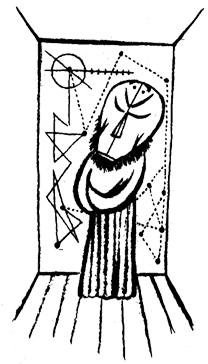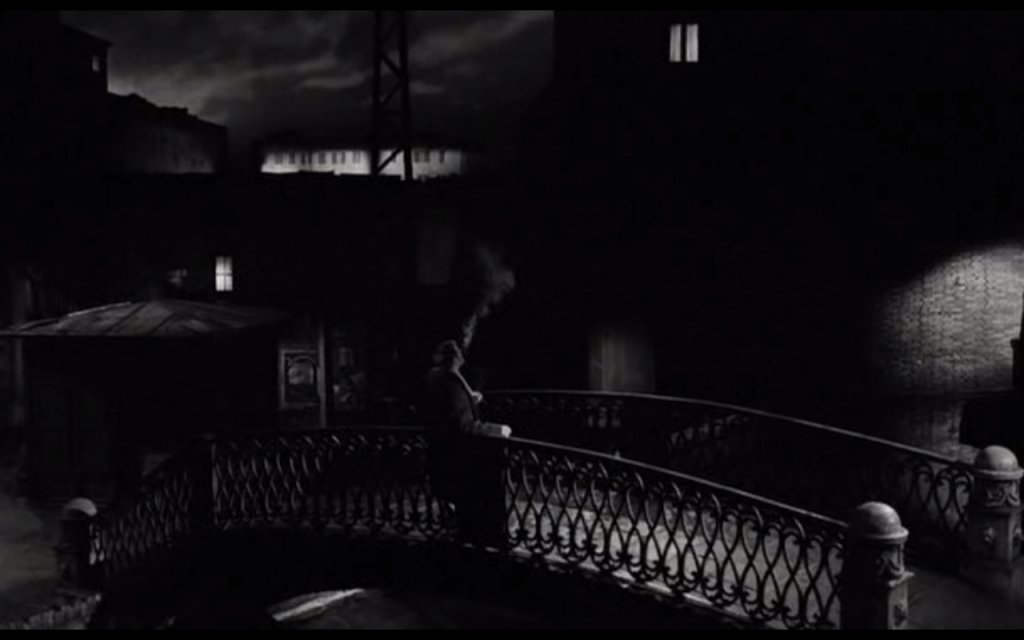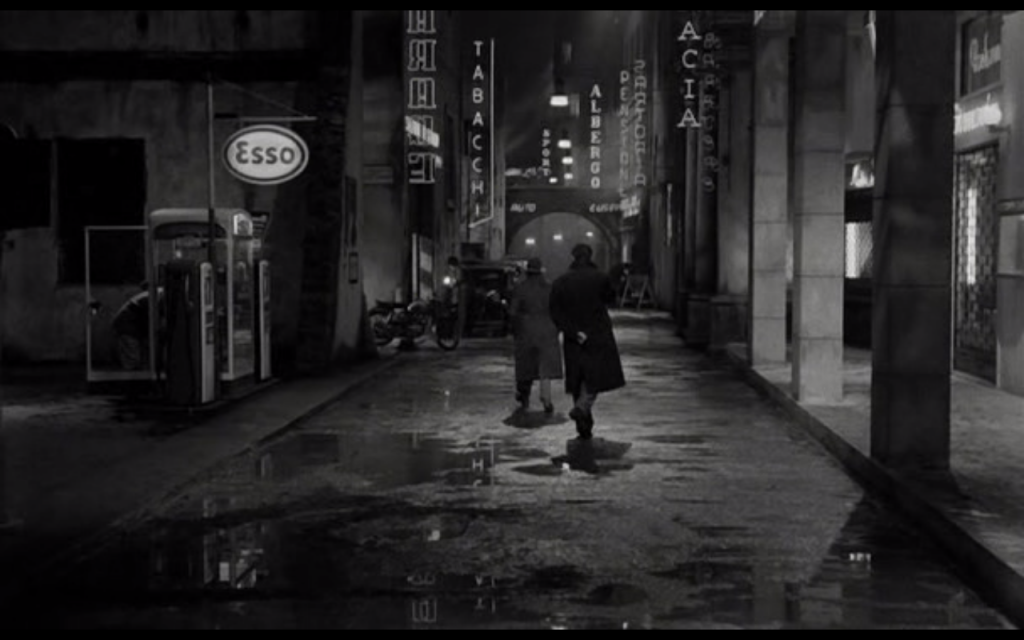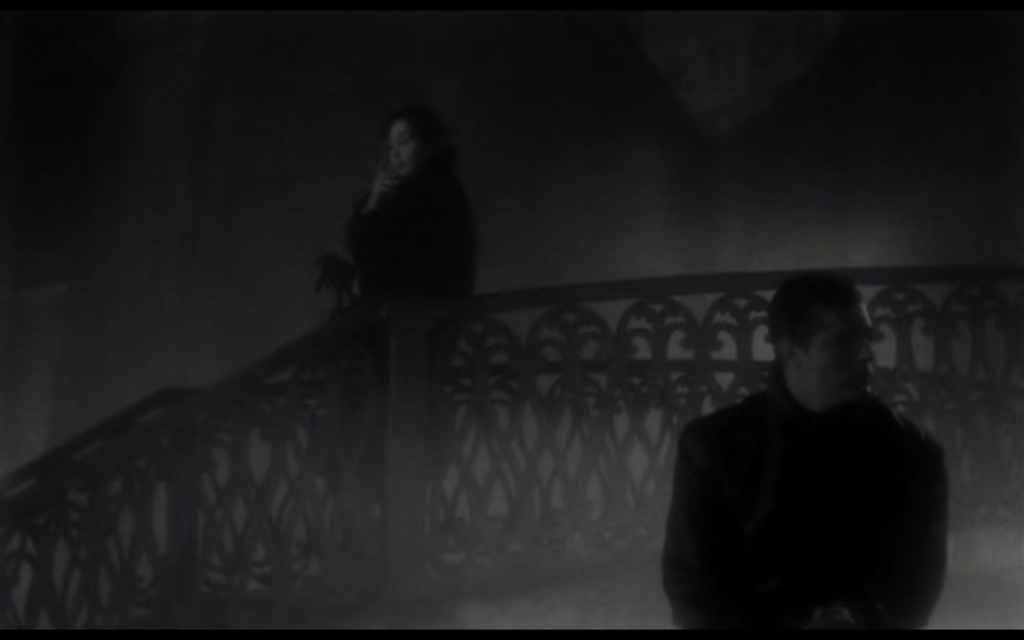June 10, 2010
Kartina Richardson
Le Notti Bianche (White Nights)
Count Luchino Visconti di Modrone is my beloved. Grand and operatic. Never fearing the theatrical or taboo (but never vulgar for vulgarities sake).
You see, we are exactly alike.
The Count was an interesting man. A member of the Italian aristocracy and the Italian Communist Party. He was open with his homosexuality, and photographs men in a way unlike any other directors I’ve seen.
He showcases their beauty.
Le Notti (based on the Dostoevsky short story) has an unusual cast, all actors I associate with different directors simply because I saw them in other movies first. Marcello Mastroianni (Fellini’s man), Maria Schell (Rene Clement’s girl), and Jean Marais (Cocteau).
Schell (with the most expressive eyes) plays Natalia, an innocent girl in a small city who pines away after Jean Marais, a lover who has left, but she insists will return to her. Natalia meets Mario (Mastroianni), a lonely wanderer who falls in love with her. Mastroianni tries desperately to convince Natalia to forget Marais and begin a new life with him. Will she or won’t she? I shall never tell. You must watch it yourself.
Visconti’s films are visually magnificent, whether in a poor fishing village in southern Italy, or a gilded Bavarian castle. The production design and photography are always brilliant, but Le Notti is in a world of its own. Set in a decaying city, it is rich in textures. Rough, wet, sticky, slick, with floors and walls that would make Tarkovsky proud. Human life is always suggested, but rarely encountered. We see the shadows of figures, and hear church bells and fog horns. Windows in buildings blaze bright, but the streets are nearly empty. Warmth, comfort, and human connection are always just beyond our reach.
The life of the city and its inhabitants ebb and flow like the disappearing and reappearing fog (created by lighting scrims at different angles similar to the ballet). There are corners of ruin, but pockets of energy and light. Natalia and Mario, out strolling the damp streets and breaking the fog (I don’t know how their sinuses survived it), discover one such pocket and create the kind of scene I live for: A little break in the narrative. Unexpected. Lyrical and transcendent.
Natalia and Mario stop at a bar to order a drink and find themselves in the midst of a mass of raucous teenagers dancing to that crazy American Rock n’ Roll music. It is a room full of sex and sin.
Fellini used dancing and parties frequently in his films, and this scene does have a Fellini-esque flavor to it. But it is different in an important way. It is heavier. It is serious. It does not point to the absurdity or humor of sexuality, or the banality of the dancers (as many of Fellini’s party dances do). In a La Dolce Vita party, for example, they distractedly play with sex. Like a beach ball, bouncing it back and forth from person to person. It is fun and amusing.
In Le Notti, the dancers also have fun, but they are focused. Sex is not a beach ball to gently tap tap, but a blazing limbo stick of fire. You remember how to limbo don’t you? Just put your lips together and blow
It is still a game, but it is dangerous. Visconti’s dancers are high on the thrilling danger of sex.
Mario tries his hardest to continue talking about intellectual and philosophic things while the rolling bodies bump into their table. Surrounded by so much eroticism he and Natalia giggle and goof around like little kids looking up a bad word in the dictionary. At one point, when faced with a particularly wild and expressive male dancer, the two seem somewhat alarmed. Natalia buries her face in Mario’s chest, away from this writhing embodiment of male sexuality. Mario, on the other hand feels challenged by the young stud’s virility and makes up a mocking dance of his own (strangely similar to Cary Grant’s dance in Indiscreet).
The room is humid. It smells I imagine. The thick earthy odor of hot bodies that is unpleasant but enormously arousing. Visconti understands sex and sexuality like no other. Understands the darkness of it, it’s dangerous and sinister power. The mysterious origins of our sexual desires and the lengths we go to to satisfy our itchings. Its inherent tie to death. It is a primal urge, often uncontrollable, making fools (or criminals) of the most sober at the drop of a hat. Sexual desire is the final frontier! Visconti knew this mysterious power well. Better than any other director. Knew it inside and out. A favorite stanza of mine from Lorca’s “Gacela of the Flight” explains Visconti’s portrayal of sex/lust/romance quite well:
No one when giving a kiss
fails to feel the smile of faceless people.
No one who touches a newborn child,
forgets the immobile skulls of horses.
Darkness is always there. That is what makes the great directors great. In one way or another, they explore the shadows.
• like this post? subscribe to the Mirror RSS Feed •





Excellent write-up. I am not a fan of old movies but this makes me really want to watch this movie.